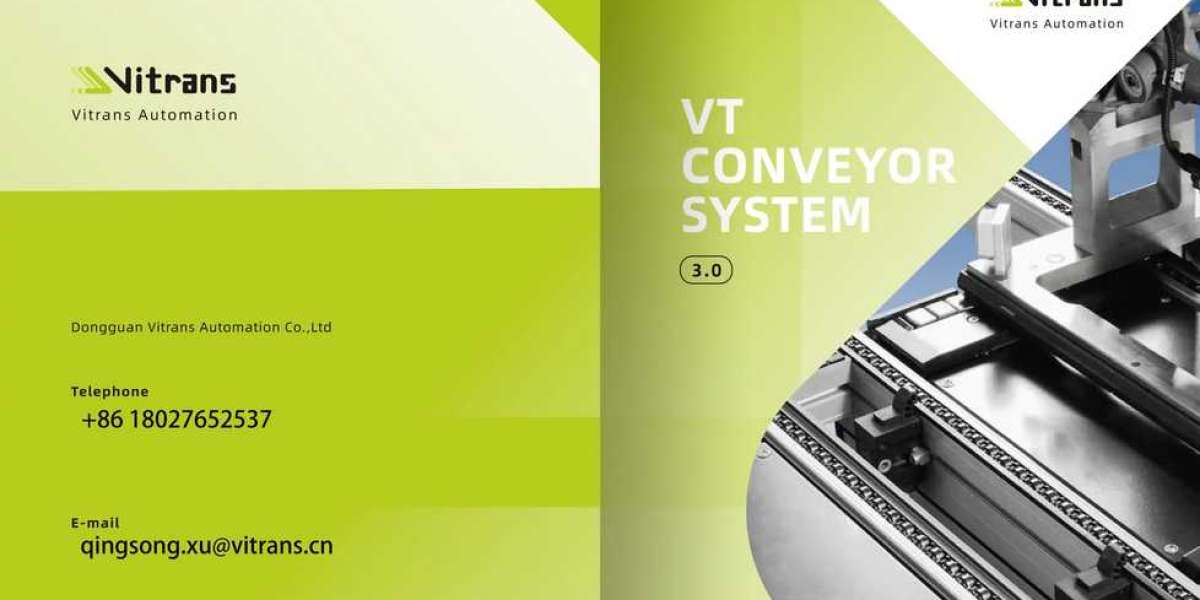In the fast-paced world of industrial manufacturing and logistics, speed, efficiency, and precision are paramount. Attachment conveyor, a specialized type of conveyor system, are designed to improve efficiency in handling and transporting various types of materials. Their unique structures allow them to move irregular or bulky items with stability and ease, making them a crucial part of modern automated facilities. As industries increasingly turn to automation, attachment conveyors have become vital in streamlining complex processes, ensuring that goods are transferred seamlessly across production lines.
What Are Attachment Conveyors?
Attachment conveyors are advanced conveyor systems equipped with added components—attachments—designed to secure and move specific items or materials effectively. Unlike traditional conveyors, attachment conveyors have extra parts such as rollers, belts, or chains with clamps or fixtures tailored to hold objects in place during transportation. This design allows for greater control, enhanced stability, and the efficient movement of goods. Their adaptability makes them suitable for industries with varying requirements, from transporting fragile items to handling heavy, irregularly shaped products.
Types of Attachment Conveyors
Attachment conveyors come in several types, each tailored to different operational needs and industries. The most common types include:
- Roller Attachment Conveyors: These conveyors use rollers attached at specific intervals, ideal for items that need to roll smoothly across production lines. Widely used in warehouses and factories, roller attachment conveyors are well-suited for moving boxes and crates.
- Chain Attachment Conveyors: Made with durable chains, these conveyors are designed to handle heavy loads and endure high-stress environments. Chain attachment conveyors are commonly seen in automotive and construction industries where strength and stability are vital.
- Belt Attachment Conveyors: These systems employ belts with attachments that secure items, making them perfect for transporting materials that need a stable, flat surface. Belt attachment conveyors are frequently used in food processing and packaging, ensuring products stay in place throughout the process.
Key Features of Attachment Conveyors
The efficiency and flexibility of attachment conveyors stem from their unique design features. These systems are highly customizable, allowing for attachments that vary in shape, size, and function, suited to different types of products. They support high load-bearing capacities, making them essential for industries handling large volumes. Additionally, attachment conveyors offer material handling efficiency and ensure that each item or product remains securely in place during transfer.
How Attachment Conveyors Work
Attachment conveyors work by adding specialized attachments to a conveyor mechanism—rollers, chains, or belts—to secure and move items along the line. The process begins as items are placed onto the conveyor’s attachments, which are designed to grip, hold, or stabilize each item. This design minimizes jostling, allowing for smooth transit through production stages. Each attachment maintains control over the item’s position, ensuring a continuous flow even with irregularly shaped products. This precision reduces errors and improves product handling efficiency.
Benefits of Using Attachment Conveyors
Attachment conveyors provide many advantages, particularly in industries where efficiency and precision are essential. By reducing the need for manual handling, they enhance production speed while minimizing risks of injury. Their design offers flexibility, allowing customization to fit specific items or materials. This is especially valuable for companies dealing with items that can’t easily be transported by traditional conveyors. Moreover, attachment conveyors provide better control over positioning, ensuring that items are loaded, transported, and unloaded with accuracy.
Industries That Use Attachment Conveyors
Several industries have adopted attachment conveyors to streamline their processes, including:
- Automotive Industry: Used for transporting car parts, from engines to smaller components, securely through the assembly line.
- Food and Beverage Industry: Essential for moving packaged goods, raw materials, and finished products in hygienic conditions.
- Pharmaceutical Industry: Helps manage delicate medical products, transporting them without damage or contamination.
- E-commerce and Warehousing: Provides the flexibility needed to handle varied package sizes and shapes for efficient order fulfillment.
Customization Options for Attachment Conveyors
The versatility of attachment conveyors lies in their customization options. Attachments can be designed to accommodate specific shapes, sizes, and weights, enabling smooth transfer of goods with minimal adjustments. Businesses can customize conveyor lengths, widths, and speeds to match their unique requirements, allowing for seamless integration into existing production lines. Conveyor manufacturers also offer specialized attachments for different materials, improving load stability and adaptability.
Safety Considerations for Attachment Conveyors
While attachment conveyors are designed to streamline operations, they must also meet stringent safety standards. Safety features may include emergency stop mechanisms, protective barriers, and load monitoring sensors. Operators are advised to conduct regular training sessions, covering proper handling and emergency procedures. Proper maintenance routines, such as clearing obstructions and checking attachment stability, are crucial in preventing accidents.
Challenges in Attachment Conveyor Operations
Attachment conveyors may face operational challenges, including wear and tear, misalignment issues, and load imbalances. Attachments can wear down over time, reducing grip strength and efficiency, while alignment issues may disrupt the conveyor’s flow. Load imbalances, common when handling heavy materials, can strain the system and impact conveyor performance. Implementing regular maintenance and using quality parts are key to mitigating these issues.
Maintenance and Care of Attachment Conveyors
Routine maintenance extends the life of attachment conveyors and ensures consistent performance. Operators should regularly inspect belts, chains, and attachments for signs of wear, adjust tensions, and clean components to prevent debris buildup. Lubricating moving parts reduces friction and prevents overheating, while periodic checks on attachment integrity ensure items remain secure during transport.
Emerging Trends in Attachment Conveyors
The evolution of attachment conveyors reflects advancements in automation and sustainable technology. Internet of Things (IoT) integration has allowed real-time monitoring, predictive maintenance, and remote adjustments, improving overall efficiency. Eco-friendly materials and energy-efficient designs are becoming more popular as companies aim to reduce their environmental impact. These trends suggest that attachment conveyors will continue to adapt and grow with technological advancements.
Selecting the Right Attachment Conveyor System
Choosing the correct attachment conveyor requires a thorough analysis of specific needs. Factors to consider include the nature of the load, space limitations, budget constraints, and operational requirements. Companies must assess the type and weight of materials being transported, as well as the desired speed of the conveyor. Properly matching these aspects to an attachment conveyor ensures optimized efficiency and cost-effectiveness.
Comparing Attachment Conveyors to Standard Conveyors
While standard conveyors handle uniform items well, attachment conveyors shine in transporting irregular, heavy, or fragile items. The added attachments provide extra stability and control, essential in industries requiring precision. In many cases, attachment conveyors outperform standard conveyors in terms of load management and customization options, especially in specialized settings.
Cost Considerations for Attachment Conveyors
The cost of attachment conveyors varies based on materials, size, and customizations. While the initial investment may be higher than standard conveyors, attachment conveyors can offer significant long-term savings by reducing labor costs and improving process efficiency. Factoring in maintenance and operational costs ensures businesses choose systems that align with both budget and operational goals.
Future of Attachment Conveyors
The future of attachment conveyors is likely to be shaped by automation, AI, and further IoT integration. These advancements will continue to improve precision, speed, and predictive maintenance capabilities, helping companies optimize their production lines. The push for sustainable and energy-efficient technologies will also drive innovation in conveyor materials and designs.
Attachment conveyors play a pivotal role in modern manufacturing and logistics, enhancing operational efficiency and reducing manual handling needs. Their adaptability and unique attachments make them ideal for handling a diverse range of products, from fragile items to heavy loads. As industries strive for increased automation and precision, attachment conveyors will remain indispensable tools for efficient and accurate material handling.
Contacts:
Email: qingsong.xu@vitrans.cn
Mobile: +86 180 2765 2537
Social Media:
https://www.linkedin.com/company/vitrans-conveyor/
https://www.facebook.com/people/Vitrans-Conveyor/61560765876931/
https://www.youtube.com/@Vitransconveyor


